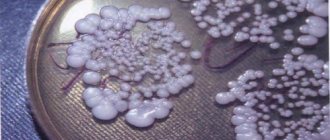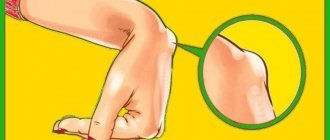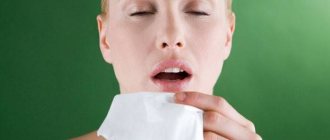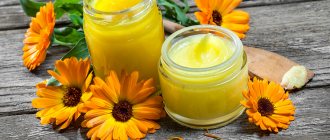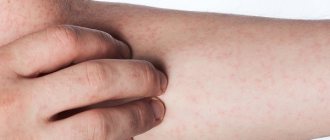- August 19, 2018
- Diseases and conditions
- Elena Kashtanova
The topic of our article is the treatment of dermatitis with folk remedies. This pathology includes not one, but a whole group of skin diseases that are provoked by various factors of physical, chemical or biological influence and cause irritation and inflammatory processes in the dermis.
Very often the disease mentioned is of an allergic nature, so dermatitis belongs to the group of allergic dermatoses.
Let’s say right away that treating dermatitis with folk remedies is beneficial in the early stages of the disease. In severe cases, it is preferable to combine traditional medicine with drug treatment under the supervision of a dermatologist.
Symptoms of dermatitis
The first manifestations of the disease make themselves felt by the appearance of small areas of redness on the skin and itching. If you do not pay attention to this, the pathological process goes further and after a while small bubbles form on the skin, inside of which there is liquid, crusts, large areas of peeling and even ulcers appear on the skin. The itching intensifies and becomes unbearable.
At this stage, it is imperative to visit a doctor, find out the exact diagnosis and begin immediate therapy. It would be useful to inform the specialist about plans to use folk remedies. Treatment for dermatitis in adults can be very lengthy. To make the process go faster, it is important to understand exactly what causes led to the disease in order to eliminate the provoking factors.
List of main manifestations of various types of dermatitis:
- The rash is pink or red, affecting certain areas of the skin. These zones are usually limited to areas that are exposed to external irritants (contact dermatitis).
- Formation of dry, reddened areas on the skin.
- Severe itching that forces a person to scratch the skin.
- The formation of round, swollen, bright red spots covered with a hard crust is nummular dermatitis. It is most common in older people.
- Formation on the head, in the areas where the mustache and eyebrows grow, as well as behind the ears of fatty scales of yellowish tints (seborrheic dermatitis).
- Atopic dermatitis, or eczema, manifests itself with severe skin irritation, itching and pain.
- Areas of stasis dermatitis: areas around the ankles and inner legs where swelling and itchy sores appear.
Making a correct diagnosis can be difficult because some types of skin dermatitis have similar symptoms.
Types of allergic dermatitis
Scientists have divided the disease into several types.
The main types of allergic dermatitis:
- Atopic allergic dermatitis - factors predisposing to its manifestation are infectious diseases, stress and nervous disorders, temperature changes and heredity. Manifests itself in the form of rough spots and redness of the skin, rashes with red spots in the form of small red pimples;
- Toxidermia or toxic-allergic dermatitis is an acute inflammation of the skin that begins to spread when chemicals and toxic substances enter the body. The irritant factor acts directly through the blood. The provocateur of this type of disease is disruption of the functioning of internal organs during the development of cancer. During its manifestation, redness appears on the body, which is accompanied by a rash and the formation of papules and blisters;
- Food allergic dermatitis is an allergic reaction to food. The cause of the disease is a reaction to food. Externally, the manifestations of the disease are similar to those of urticaria and atopic dermatitis;
- Drug dermatitis - the manifestation of the disease can be either from the first or from prolonged use of the medicine. Irritants include over-the-counter medications, including various antibiotics and sulfonamides. Symptoms have their own characteristics, such as oval and round spots that become dark in color;
- Chronic allergic dermatitis . It is more difficult to treat than previous types of the disease, and requires treatment from the patient regardless of the manifestation or disappearance of external factors. There are periods of remissions and exacerbations for it, which requires careful selection of drugs by a doctor. Symptoms of the disease are redness and thickening of the skin, small pimples and severe itching.
Atopic allergic dermatitis Toxic-allergic dermatitis
Food allergic dermatitis
Drug allergic dermatitis
Chronic allergic dermatitis
Weeping dermatitis: treatment with folk remedies
Weeping dermatitis is very painful. With it, cracks and ulcers form on the skin, which constantly become wet and ooze ichor. The pathology is often complicated by the addition of bacterial inflammation or fungal infection, which in advanced cases can even lead to blood poisoning.
Both adults and children who have disturbances in the functioning of the digestive system are susceptible to the disease. Traditional healers use the following to treat weeping dermatitis:
- astringent decoctions of oak bark (for local compresses);
- chamomile decoction lotions (they relieve inflammation);
- various home remedies based on celandine.
Celandine is very often used in folk medicine to treat skin problems. A good help in the fight against weeping dermatitis is a decoction of celandine. It is necessary to use the entire plant (its roots, stem, leaves, inflorescences).
First, the plant is thoroughly chopped with a knife. Then the resulting slurry is poured with water (two liters of cold liquid per 2 cups of herbal raw materials). Cook everything for 10 minutes over low heat, covered. Infuses for approximately 3 hours. The resulting decoction is used for lotions.
Treatment at home
- Celandine . The celandine is ground in a meat grinder or in a blender, and the juice is squeezed out of the resulting mass using gauze. The resulting juice is diluted with boiled water in a ratio of 1:2. Use a cotton or gauze swab dipped in celandine solution to gently lubricate the affected areas and allow the skin to dry. If the child is not very active, then applications can be applied on gauze swabs for 10-15 minutes. A similar method of applying and decoction of celandine.
- Series . A tablespoon of herb is poured into 1/2 cup of boiling water and left until the solution turns dark brown. A gauze pad is moistened in the prepared infusion and applied to the inflamed areas of the skin. Such dressings can be applied 3-4 times a day.
- Periwinkle . 1 tbsp. Add a spoonful of periwinkle leaves to a glass of water and simmer over low heat for 10 minutes. The broth is cooled, filtered and added to the baby’s bathing water. Periwinkle is a poisonous plant, but if the dosage is observed, it treats many diseases: lamblia in children and adults, hypertension, purulent ulcers, eczema, vegetative-vascular dystonia.
- Sophora japonica . 1 tablespoon of medicinal herb is poured into a glass of boiling water. Let it sit for 8-12 hours and give it to the baby to drink throughout the day.
- Tar soap improves blood supply to inflamed areas and reduces irritation. It has anti-inflammatory, antimicrobial and antiseptic effects. In its pure form, tar soap is used in the form of compresses, applications, short-term baths, rubbing massage, or simply as soap when bathing a baby.
- Tea tree oil is a powerful antiseptic with antimicrobial, antifungal, anti-inflammatory and antiviral properties. Especially if dermatitis is caused by mechanical damage (insect bites, injuries, burns). It can be used as an independent remedy or added to other solutions. Tea tree oil can be combined with tar oil or other oil solutions in various proportions.
Treatment consists of applying a few drops of oil to the inflamed areas. With light massaging movements, the oil is evenly distributed over the entire surface of the inflammation. 15-20-minute lotions and applications are especially effective in protecting against pathogenic microorganisms for a long time.
- Pharmaceutical camomile. Pour 2 tablespoons of chamomile flowers into a glass of boiling water and leave for 30-60 minutes. Add the decoction to the baby’s bathing water. Chamomile will soothe irritations and relieve redness, especially in areas of natural folds. You can also add a decoction of string or arnica to the bathing water to obtain an anti-inflammatory and drying effect, and oak bark will have an astringent and tanning effect.
But don’t get carried away with such herbal baths. They can be used once a week, and in case of severe exacerbation - twice. All herbal infusions have a drying effect, and with prolonged use they can cause dry skin, which is especially undesirable for dermatitis. Chamomile decoction copes well with gastritis in children and adults.
Perioral or perioral dermatitis in adults
This skin pathology affects the skin in the chin and mouth area. In these places, rashes appear on the skin that resemble rosacea in appearance. This type of dermatitis is often chronic.
This phenomenon is quite rare and most often “female”. Representatives of the stronger sex rarely suffer from this disease; the disease mainly affects young girls and women under 40 years of age.
Treatment with folk remedies for perioral dermatitis can be lengthy, but with due diligence it gives good results. Recipes:
- Rubbing the skin 2 times a day with aloe juice, with the addition of honey and medical alcohol. Everything is taken in 1 part.
- Treatment with homemade propolis ointment. Propolis is placed in a fireproof container, filled with vegetable oil (refined) and melted in a hot oven. Then the ointment is mixed, cooled and used to lubricate diseased areas of the skin. For 1 part propolis you need 4 parts oil.
- Before smearing the skin with homemade ointment, it is recommended to wipe it with infusion from birch buds. The buds are brewed with boiling water (1 glass) and infused. After straining, the infusion is ready for external use.
St. John's wort
This plant has a calming effect and reduces the severity of itching and pain.
To prepare the ointment, fresh St. John's wort is crushed and the juice is squeezed out (at least 1 glass). The resulting liquid is put on fire and boiled until the volume is reduced by 2 times. Then the juice is cooled, mixed with butter, in a proportion of 1/4. The resulting composition is lubricated on inflamed areas of the skin 2-3 times a day.
Another recipe based on St. John's wort is oil with the addition of a plant component. Fresh raw materials (25 g) are crushed and 240 ml of vegetable oil is poured into it. The mixture is infused for 15 days, then filtered. The resulting composition is applied to inflamed skin.
How to treat contact dermatitis
Treatment of contact dermatitis with folk remedies in adults can begin only after skin contact with the allergen has been completely eliminated. Even at the very first signs of incipient dermatitis, you can and should take a warm, short bath with a weak solution of potassium permanganate added to the water. It is recommended to lie in such a bath for about 15 minutes.
Also, for contact dermatitis, a bath with oak bark decoction can bring relief. This procedure will relieve itching, inflammation and swelling of the skin. If the affected area is small, it is not necessary to take a full bath; it is enough to limit yourself to local baths.
Lotions with strong tea help with this disease. You can brew both black and green tea. These compresses are cured thanks to the tannin contained in the tea leaves.
The periwinkle plant is quite helpful in treating skin ailments. It is used to prepare healing baths. Here is the recipe: take dried periwinkle leaves (1 cup), grind them into powder and brew with boiling water (2 liters). Then leave in a steam bath for 10 minutes, strain and add to the bath. Do not throw away the plant mass that remains after straining. It can be applied to the affected areas of the skin.
Treatment of allergic dermatitis in infants
The very first step in the treatment of allergic dermatitis in infants in the acute stage is the prompt elimination of contact with the allergen. Then drug therapy is carried out.
Antihistamines
Such drugs are aimed at eliminating the painful symptoms of allergic dermatitis, primarily such as unbearable itching, due to which small children cannot even sleep normally.
For this purpose, the following drugs are usually used:
- Fenistil - drops of antiallergic and antipruritic action. Children from 1 month to 1 year take 8 drops 2 times a day. The average cost of the drug is 360 rubles ;
- Zaditen is a drug in the form of syrup, the main substance is ketotifen, can be used from 6 months in the amount of 0.05 mg per kilogram of body weight. Average cost 1000 rubles ;
- Zyrtec is a histamine receptor blocker drop. Children from 6 months to 1 year: 5 drops 1 time per day. Cost from 250 rubles .
Fenistil Zaditen
Zyrtec
Non-hormonal drugs
If the symptoms of allergic dermatitis are not too intense, you can get by with local non-hormonal agents.
Such as:
- Fenistil - the gel is applied to the affected area of the skin in a thin layer and left until completely absorbed. For children under one year of age, use 2 times a day. Cost from 360 rubles ;
- La-kri - cream should be applied 2 times a day to the affected areas of the skin, previously cleansed or washed with water. For severe lesions, apply a significant amount of cream; after 5 minutes, remove the remaining cream with a cotton swab. The average cost is 200 rubles .
Fenistil gel
La-cree
Hormonal drugs
Such drugs are prescribed in cases of severe severity and significant prevalence of an allergic reaction.
For children under one year of age, the following drugs are allowed:
- Elokom - used from 6 months. Do not apply to skin areas larger than 1/8 of the body surface. The course of treatment should not be done for more than one week. At the end of treatment, it is necessary to mix the product with baby cream before application. Average cost 360 rubles ;
- Advantan - use from 4 months. Apply a thin layer once a day for no more than 14 days. Cost from 450 rubles .
Elokom
Advantan
Hormonal drugs have a huge number of contraindications and side effects, so they should be used only as prescribed by a doctor.
Antiseptics
It happens that allergic dermatitis in a child is accompanied by the appearance of erosions or weeping inflamed areas on the skin. Then treatment will include the application of wet-dry bandages soaked in an antiseptic.
The most common for children under one year of age:
- Miramistin is a modern antiseptic that has a pronounced destructive effect on many bacteria, viruses and fungi, including those resistant to other antiseptics. Cost from 180 rubles ;
- Furacilin - promotes wound healing. Most often used in the form of tablets of 20 mg to prepare a solution or a ready-made 0.02% solution. Cost from 30 rubles ;
- Tsindol - the drug reduces the secretion of fluids, and also reduces the severity of irritation and inflammation. The average cost is 70 rubles .
Miramistin
Furacilin Tsindol
Often, as a result of a secondary infection, dermatitis is complicated by the appearance of pustules and vesicles. These blisters are opened under sterile conditions and treated with brilliant green or blue (not iodine, it can only be used to lubricate the edges of the wound).
Antibiotics
Used if the bacterial nature of the skin infection is confirmed.
Effective ones include:
- Fucidin is an antibiotic ointment with bactericidal action. Apply a thin layer to the skin 2 times a day, no more than 14 days. Cost from 420 rubles ;
- Dermazin is an antimicrobial cream. Apply to skin 2 times a day. Can be used from 3 months. The average cost is 250 rubles .
Fucidin
Dermazin
Enterosorbents
Such drugs act effectively in the gastrointestinal tract of children, binding and removing substances in a natural way, therefore they are used to cleanse the body of food allergens.
The following drugs are suitable for children under one year of age:
- Smecta is a naturally occurring substance, available in the form of a powder with the scent of vanilla or orange. Use is allowed from the first days of life. Average cost 160 rubles ;
- Filtrum-STI is a drug suitable for infants and for relieving any form of intoxication. Average cost from 80 rubles .
Smekta
Filtrum-STI
Probiotics and prebiotics
They are biologically active preparations that contain live bacteria of normal intestinal microflora.
Probiotics for children prevent the development of dysbiosis and have a therapeutic effect in case of any allergic reactions.
For children under one year of age the following are prescribed:
- Bifiform Baby - this product is sold in bottles that contain an oil solution. The use of the drug restores the amount of beneficial bacteria, vitamins, nutrients and minerals in the newborn’s body. Cost from 450 rubles ;
- Normoflorin-L is a completely natural drug, without preservatives, dyes or taste adapters. It also contains no lactose or cow's milk protein. Cost from 250 rubles .
Bifiform Baby
Normoflorin-L
Vitamin complexes
In the first 12 months, the child’s body develops especially quickly and actively, requiring the supply of many nutrients, especially when allergic reactions occur.
For children under one year old use:
- Vitamin D - experts strongly recommend its use for children under one year of age. The most popular drug is Aquadetrim, the main thing is not to overdose the drug. Cost from 150 rubles ;
- Multitabs-Baby
- for infants, the complex can be mixed with drink or food.
The average cost is 380 rubles .
Aquadetrim
Multitabs Baby
It is important to note that the course of treatment is prescribed only by a specialist. Also, you should not resort to the use of various traditional methods of treatment for children under one year old, except for bathing in baths with decoctions of herbs that are safe for infants.
Diet for allergic dermatitis in infants
Diet for dermatitis in infants is the key to recovery if the disease is caused by food. It is necessary to exclude the allergen identified by the attending physician from the diet.
If the baby is fed artificial food, then he should be switched to hypoallergenic formulas that do not contain cow protein.
If the baby is fed breast milk, the nursing mother should also review her menu.
Is it possible to bathe children with allergic dermatitis?
Children with allergic dermatitis can bathe in the bathtub. Moisture is not harmful to irritated and damaged skin. We are talking about the presence of chlorine in the water, which is rich in its presence in the water.
Children should be bathed in clean, filtered or settled water.
It is recommended to add folk remedies to the bath such as:
- Fresh brewed black tea;
- Decoctions of bay leaves;
- Infusions of wheat bran for dry and rough skin;
- Various decoctions of mint, string and chamomile.
Treatment of eyelid dermatitis in adults
Dermatitis of the eyelids often occurs as an allergic reaction to the use of various cosmetics (mascara, eye shadow, powder, cream, etc.). The disease can also develop due to an allergy to antibiotics.
To treat eyelid dermatitis with folk remedies, you can use the following recipes:
- Apply compresses of string and hops to the eyelids daily. To prepare the medicinal composition you need 1 tbsp. l. Brew a mixture of hop cones and string with boiling water, leave and be sure to strain thoroughly (after all, the compress will be applied to the eye area). Next, cotton pads are soaked in the broth and applied to the eyelids. Procedure time: 15-20 minutes.
- Make a mask from aloe. It perfectly relieves irritation and has a healing effect. The recipe is simple: combine 1 spoon of aloe juice with eucalyptus and castor oil (1 tsp). Lie down, close your eyes and apply the resulting mixture to the sore eyelids. Remove the mask with a clean napkin after 20 minutes.
- An effective folk remedy for the treatment of dermatitis is celandine tincture. Here you need the juice of this plant. In summer you can squeeze it yourself, and in winter and in the off-season you can buy it at the pharmacy. The juice is mixed with vodka in a 1:1 ratio and infused for a couple of days in the dark and cool. The eyelids are wiped with the tincture several times a day using a cotton swab. The recommended duration of treatment is 3 weeks.
Traditional treatment for dermatitis
To effectively treat dermatitis, it is necessary, first of all, to exclude the cause of the disease, and only then begin to treat the disease. Treatment of dermatitis includes the use of the following:
- Solutions. Various mechanical damage to the skin is treated with a 2% alcohol solution of brilliant green, fucorcin (the same iodine, soap alcohol, lead water), Castelani paint and other solutions.
- Ointments and creams. At night it is recommended to apply dermatol ointment and xeroform ointment. When a secondary infection occurs, various antimicrobial and antibacterial ointments are used (for example, synthomycin ointment, Vishnevsky ointment, and others). If severe itching is observed, antiallergic, antipruritic ointments and creams (mometasone, Actovegin and others) are prescribed. In order for wounds to heal faster, various vitamin ointments (for example, Radevit) are used.
- Pills. If treatment with ointments and creams does not give the desired effect, then in order to defeat the disease from within, medications are prescribed in tablets. Tablets, like ointments, are prescribed depending on the problem that arises: antihistamine tablets are taken for allergic dermatitis (Suprastin, Zyrtec). If an infection has already appeared on the skin and boils have appeared, then antibiotics and antifungal tablets (nizoral, orungal) are prescribed.
Treatment of solar dermatitis
This condition is one of the types of allergic skin irritations that arise as a response to ultraviolet radiation. Other names for the pathology are solar fungus and photodermatitis. A characteristic symptom is swollen red rashes on areas of the skin unprotected from the sun.
Typically, sun fungus affects people prone to various allergic manifestations. Treatment of dermatitis with folk remedies in adults affected by sun rays can be carried out using the following methods:
- Compresses made from raw grated carrots.
- Baths with currant leaves.
- Rubbing with medicinal oils of St. John's wort, rose hips, sea buckthorn, peach.
- Apply fresh cabbage leaves to the affected area.
- Lubricate the skin with egg yolk.
- Vinegar lotions.
A proven folk remedy for treating dermatitis at home is taking a bath with herbal infusions added to the water. St. John's wort, sage and chamomile are best suited for treatment. These components are taken in equal parts, crushed and filled with water (boiling water).
Exact recipe: for 3 liters of boiling water – 100 g of herbs. The brewed infusion should simmer under the lid for 30 minutes. Afterwards it is poured into the bath, having first been filtered. You need to lie in the healing water for at least 20 minutes. It is necessary to take such baths every day until there is a pronounced improvement in the condition of the skin.
Treatment of solar dermatitis with folk remedies is best carried out in combination, using not only external rubbing, compresses and baths, but also herbal tinctures intended for oral administration.
Herbal medicine recipes
1 Herbal compresses.
The following raw materials are most often used as a therapeutic active component in compresses: oak bark, elecampane, chamomile, calendula, celandine, string, green tea. In order to make a compress, first prepare a decoction of medicinal herbs as follows: one tablespoon of herbal raw materials is poured with a glass of boiling water. Brew should be in a glass or enamel container, covering the broth with a lid. After two hours, when all the active components have transferred from the plant to the decoction, it can be used for a compress.
The compress itself is also made according to the same rules. Moisten gauze with the broth, place it on the damaged area of the skin, cover the top with polyethylene and a towel, and leave it there for several hours. The therapeutic effect of the compress is also due to the fact that heating occurs and microcirculation improves, and therefore accelerates the repair (restoration) of the affected skin area.
2 Herbal baths are often used for bathing, this is especially true when treating young children. To eliminate the manifestations of allergic dermatitis, the same decoctions that are added to the bath are used. Moreover, under no circumstances should you bathe your baby in pure broth; it must be diluted at the rate of one glass of broth per three liters of boiled warm water. And after bathing, be sure to rinse off the broth with warm water.
Decoctions of string, wild rosemary, and a combination of calendula and chamomile in equal parts are often used. You can also try a very effective herbal bath composition, consisting of: nettle - two teaspoons, oregano - one teaspoon, chamomile - three teaspoons, cornflower flowers - three teaspoons and valerian rhizomes - two teaspoons.
3 One of the most common manifestations of pathologies in adults is the appearance of allergic dermatitis on the hands. Treatment with folk remedies, for example, compresses, is difficult here. Therefore, special ointments or gruels based on plant materials are often used.
Sea buckthorn oil ointment is an excellent way to cope with allergic dermatitis. To prepare it, mix two teaspoons of sea buckthorn oil and ¼ cup of melted fat. But it is worth remembering that sea buckthorn oil, along with its healing properties, has a very persistent coloring pigment. If it gets on your clothes, it is almost impossible to wash it off. That is why this ointment is best used for dermatitis on the hands.
There are also often recommendations for using gruel from regular onions. To do this, grind one medium onion in a meat grinder or blender and carefully mix in one teaspoon of burdock oil.
These are the most popular, proven and effective recipes that are used in folk medicine to treat allergic dermatitis. But do not forget that they only act locally on the skin, helping to level out the manifestations. Therefore, in no case should you replace treatment with folk remedies by contacting a dermatologist.
Only a doctor can help you make a correct diagnosis, indicating that this pathology is allergic dermatitis, and not some other, more formidable disease. In addition, only in a clinical laboratory can one accurately determine the type of allergen that caused the pathology. And the use of systemic medicinal hyposensitizing agents capable of comprehensively influencing the pathogenesis of allergic dermatitis cannot replace any herbal decoctions.
Oral preparations for solar dermatitis
To prepare a medicinal herbal tea infusion you will need: juniper fruits, plantain leaves, sage, nettle, corn silk - all these components 2 parts each, wormwood - 1 part, horsetail herb and yarrow - 3 parts each. Just one small teaspoon of the mixture is brewed with a glass of boiling water, infused and 1/3 glass is drunk three times a day.
We invite you to get acquainted with another good recipe for solar dermatitis. First you need to prepare equal parts:
- rose petals;
- sea gravy and angelica;
- valerian (only its roots);
- watch notes;
- veronica and lemon balm;
- burdock roots and flax seed;
- tricolor violets;
- spicy sedge.
Grind and mix the listed herbs. Place the mixture in a canvas bag, store and use as needed. A healing decoction for oral administration is prepared from this raw material.
This is done in this way: 6 grams of the prepared dry mixture is poured with boiling water (350 ml), the vessel is placed to simmer in a water bath for 10 minutes, and then infused for 2 or 3 hours. Of course, you need to strain it before using it. Take the medicine after meals, half a glass 2 or 3 times a day.
An ancient recipe for skin diseases
Dermatitis, eczema, psoriasis and other skin ailments were treated with the celandine plant 1000 years ago.
However, those ingredients that are listed in the recipe raise great doubts among modern doctors.
An ancient recipe for the treatment of celandine dermatitis with the translation of ancient measuring measures into modern ones is as follows:
1. Crushed celandine plant (7.6 g). 2. Medical soap powder (4 g). 3. Hemlock squeeze (1.25 g). 4. Antimony pentasulfide (0.620 g). 5. Calomel (0.625 g).
For the bunch, rhubarb, crushed into powder, was added. It was prescribed to take 1.25 g of the product 2 times a day.
Today, elements such as antimony and mercury compounds are prohibited in pharmacology, so it is better to treat dermatitis with celandine in other ways.
How to treat chronic dermatitis
For chronic dermatitis, treatment with folk remedies must be coordinated with your doctor. The solution to this serious problem requires obligatory adherence to a fairly strict diet.
What not to eat and drink if you have chronic dermatitis:
- fried and fatty;
- baked goods;
- soft pasta with high gluten content;
- potatoes and semolina porridge;
- pickled and smoked products;
- cakes and pastries;
- tomatoes;
- citrus;
- store-bought juices and sweet soda.
What you are allowed to eat:
- low-fat cottage cheese;
- kefir;
- baked milk;
- zucchini;
- cabbage;
- dietary meat and fish.
These recommendations are intended for adults. Treatment of childhood dermatitis with folk remedies must be agreed with a pediatrician. This is especially true for babies who are breastfed.
A few more folk recipes for dermatitis
What other treatment for dermatitis at home with folk remedies can we recommend to our readers?
If the skin, for no apparent reason, begins to peel off severely and becomes inflamed, then you can treat it with the following healing ointment:
- mix 1 spoon of glycerin and 1 spoon of milk;
- add starch (rice) to the mixture;
- Grind everything thoroughly until a liquid, homogeneous paste is formed.
Apply this ointment to problem areas in the evening before going to bed. In the morning, rinse off the composition with a decoction of linden blossom or plain clean water.
Inexpensive tar soap is sold in stores. Not everyone knows that this is an excellent remedy for relieving skin inflammation. It has a beneficial effect on skin irritations and has an antiseptic and antimicrobial effect. But it cannot be used for weeping dermatitis.
Other effective methods of traditional treatment
To treat allergic dermatitis, a decoction of birch buds or the bark of this tree is often used. Therefore, a fairly effective remedy for dermatitis is the usual and well-known tar soap. It will improve blood circulation in the wound, reduce skin irritation, in addition, it has good antiseptic properties.
One of the most effective and safest methods of treating dermatitis is the use of talkers. Boltushki are solutions that contain various components; before applying this solution, it must be shaken. There are various types of mash in the pharmacy (based on alcohol, chloramphenicol, salicylic acid, etc.), but you can also make mash with your own hands. The main thing is to know the cause of dermatitis; the doctor, depending on the type of disease, will select the necessary components to prepare your mash.
In addition to the main treatment, it is recommended to adhere to a special diet until complete recovery; it is recommended to reduce or completely remove the following foods from the diet:
Citrus fruits are prohibited for dermatitis
- milk and dairy products;
- citrus and other exotic fruits;
- bakery products;
- fish;
- sugar and chocolate;
- red vegetables and berries;
- canned food;
- eggs;
- chips and soda, etc.
Like any disease, dermatitis requires adequate treatment. You should not ignore the first symptoms of this disease, attributing them to a common allergy. Over time, dermatitis can easily become chronic; such dermatitis will be much more difficult to cure. It is better to immediately consult a doctor who will prescribe the appropriate treatment for you.
Prevention of dermatitis
We have talked quite a lot about the treatment of dermatitis. Folk remedies, ointments and creams can be used indefinitely and still remain a sick person if nothing is done for preventive purposes.
For example, people with hypersensitive skin need to avoid factors that can trigger the onset of skin irritation. In addition, it is recommended to adhere to the following rules:
- Give preference to clothing made from natural fabrics, especially in hot weather. It is best to wear cotton and linen in summer.
- Do not wash in too hot water; the shower or bath should be at a warm, comfortable temperature. For washing, use baby soap or any special hypoallergenic gels.
- To moisturize the skin, use natural creams and lotions without fragrances or chemical fragrances.
- People prone to contact dermatitis should avoid wearing metal jewelry. Gold jewelry or surgical steel jewelry will be safe for them.
- When working around the house or in the garden and coming into contact with household chemicals, you need to protect the skin of your hands with rubber gloves, and sometimes even use a respirator and goggles for your own protection.
- For your home, you need to purchase an air humidifier and be sure to use it in winter, when the air is very dry from hot central heating radiators.
Prevention of the disease
- Daily use of unscented moisturizing creams or ointments.
- After taking water procedures, pat your body dry with a towel, and then apply moisturizer to damp skin.
- Children's clothing should be made of soft natural fabrics (cotton or linen).
- All baby skin care products should be unscented.
- Detergents must be hypoallergenic (without fragrances or dyes).
- The duration of water procedures should not exceed 10 minutes. Water should be at room temperature, hot water is strictly prohibited;
- The child's nails should be cut short and without sharp edges. This will prevent scratching of the damaged areas.
- Eliminate from the child’s life any contact with products or substances that cause allergies.
- Strict adherence to hygiene rules.
- Regular diaper changes.
- Regular taking of air baths.
- Monitor the quality and regularity of your diet.
- Daily walks in the fresh air.
Treatment of dermatitis in children sometimes lasts for several years. Only after the final formation of the immune system and intestinal microflora does the disease recede. Therefore, the main task of all parents is to prevent the disease and comply with all preventive measures . Remember: your beloved kids suffer precisely because of parental negligence!
If you have family recipes for fighting dermatitis, write about it. Many young parents want to treat their babies with folk remedies, and your recipes and experience will become valuable knowledge for them.
